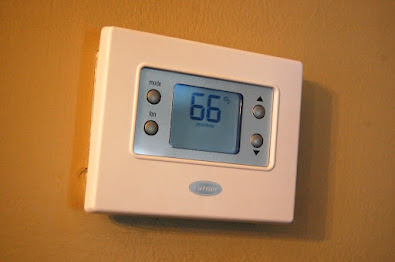Learn the basics of commercial HVAC installation today
Are you looking to get a commercial HVAC system installed? If so, then you need to know the basics. Commercial HVAC systems are typically much more advanced than home heating and cooling systems and can save you a lot of money in the long run. So, if you're starting out, it's important to understand the different types of systems and what they can take care of.
9 Steps for a Smooth HVAC Installation for Your Business
If you own or run any commercial building, chances are you've had to install some heating, ventilation, and air conditioning (HVAC) system at one time or another. Of course, as a business owner, you'll likely need to hire someone else to design, build, test, and maintain your systems, but before you do, here's how to ensure they're installed properly.
Step 1. Determine the Needs & Scope of Work - Before you start, discuss what you want to be done with your contractor. You may need to adjust your current HVAC system depending on how much square footage you have. Be sure to account for ductwork, vents, thermostats, electrical boxes, plumbing, and anything else you'd expect to find. If you already know what works best for your space, then it's easier to choose the right equipment size, but if not, you should consider hiring a professional to help you determine the needs beforehand.
Step 2. Gather Materials - Once you understand what you need, gather Everything together and take inventory. Ensure you have enough installation materials, including replacement parts, tools, and supplies. Don't forget about testing equipment, software, manuals, and training classes.
Step 3. Decide on Equipment - After gathering all the materials you need, sit down and decide on the type of equipment you would like to use. Choose equipment based on the scope of work and budget you have. Most businesses tend to go with low-cost options first, but don't stop there; they shouldn't just be low-priced. Look for quality equipment that can last, like high-quality motors and compressors. Also, look at units that offer remote controls, computerized scheduling, and more advanced features.
Step 4. Selecting Contractors - Since contractors aren't often included in these contracts, finding the right person to install your equipment can be tricky. But the good news is that you can save money yourself! There are plenty of ways to learn and even earn experience installing your equipment. Many local home improvement stores, hardware stores, and online retailers sell affordable guides and instructional videos to teach you the basics.
Step 5. Set Up Shop - When selecting a contractor, it's important to set expectations early on. Ask questions about their background and qualifications, and explain what you'd like from a job. Take any concerns over safety and liability seriously. After Everything goes well, give them ample opportunity to show off their skills and professionalism. A simple tip is to ask for references, but don't call them until after he finishes working on your project.
Step 6. Get Started - Having your contractor set up the shop means he's ready to begin work. It would help if you let him know where you want the equipment placed and how you plan to operate the unit once it's installed. He'll need access to your existing electrical panel and ductwork, plus, if applicable, any mechanical room that might exist. From there, you can leave him alone to get started and follow along as he installs the unit.
Step 7. Follow Along - While your contractor completes the setup, you should keep tabs on his progress. Please pay attention to any issues he encounters while getting your equipment running. If possible, try to assist him whenever he asks for help. Doing so shows that you care about making sure things go smoothly, making you look trustworthy and reliable. In addition, you could save a ton of money if you catch problems ahead of schedule.
Step 8. Test Everything Out - Now that Everything is running smoothly, it's time to check out your new equipment. To do so, turn on each piece of equipment and your entire system and observe whether it runs efficiently. Check for leaks, condensation, overheating, and more. Do this periodically throughout the year or before winter sets in.
Step 9. Complete Cleanup - Finally, wrap things up by cleaning up any messes left behind. Turn off your old HVAC equipment, disconnect wires, and dispose of hazardous substances properly.
In conclusion, commercial HVAC installation is not as difficult as one may think. By following these simple tips, one can have their heating and cooling system up and running in no time.




Comments
Post a Comment